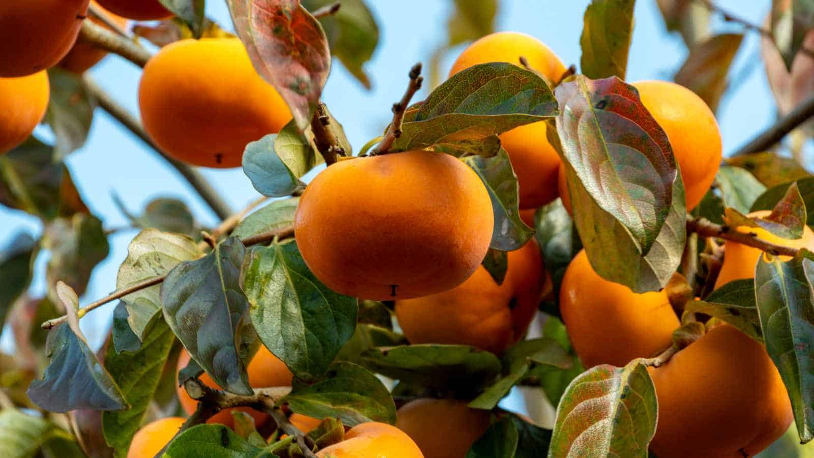Did You Know?
The fruit of the persimmon (Diospyros) is botanically a berry. The tree is in the same family as ebony, and the heart wood of the persimmon is indeed an ebony color and very hard. Persimmon wood is often used in golf club heads. Persimmon trees are dioecious with male and female flowers on separate trees. Only trees with female flowers will bear fruit.

Types of Persimmon
Two varieties are native to Texas – the Texas persimmon (Diospyros texana) more common in the Hill Country and further south and west and the Eastern persimmon (Diospyros virginana) common in the eastern third of the state and in much of the eastern US. Although both native varieties produce a small edible fruit, the varieties most often planted for fruit production are the Asian varieties (Diospyros kaki) which are usually grafted onto Eastern persimmon rootstock. Broadly, persimmons are categorized as either astringent or non-astringent. Astringent varieties have very high tannins and are quite bitter until fully ripened. Non astringent types can be eaten while still firm and crisp although flavor improves as they fully ripen. Fruit shape varies widely among varieties and the color ranges from yellow orange to red-orange to brown. Native tree fruit often turns almost black when ripe. Hachiya is a typical astringent variety and Fuyu is a commonly grown non-astringent variety. The astringent variety Eureeka has been the best producer in our orchard.
When to Plant
It is possible, although fairly difficult, to grow persimmons from native persimmon seeds or from cuttings. For better fruit production, the young native trees can then be grafted with an Asian variety. Most gardeners will buy already grafted trees which are best planted while dormant in the fall or early winter. Persimmons are fairly tolerant of different soil types but will do best in well drained, fertile garden soil. Of all the fruits we grow, persimmons are the least bothered by pests and disease but they are quite attractive to wild critters with a sweet tooth.
Harvest and Storage
Persimmons typically ripen in late fall to early winter. Astringent varieties can be left on the tree until completely ripe – often after a frost and the trees have shed their leaves. Non-astringent types can be picked while still firm. Both types will continue to ripen and soften after harvesting. Astringent varieties harvested while firm will need to be stored until they are soft, and the tannins are reduced – a process called “bletting”. Bletting can be accelerated by keeping the fruit near bananas or apples which emit ethylene gas. Firm persimmons will keep in the refrigerator for a couple of weeks or more. Ripe persimmons will keep for a few days under refrigeration. The fruit can also be dried or frozen.
By: Michael Vidrine
